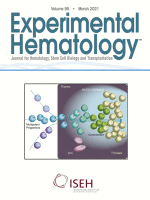PROJECT OVERVIEW
In this edition of Experimental Haematology we review the crosstalk between normal residual HSC and the leukaemia niche in AML to highlight:
• AML remodels the bone marrow niche to make it a more permissive environment.
• The bone marrow niche has a key role in suppressing hematopoietic stem cells during leukemic progression.
• Future research may be exploited to provide treatments for one of the key complications of AML.
PROJECT DETAILS
- Research Name Understanding of the crosstalk between normal residual hematopoietic stem cells and the leukemic niche in acute myeloid leukemia
- Journal Experimental Hematology
- Year 2021
- Link https://www.sciencedirect.com/science/article/pii/S0301472X21000266

Abstract
Acute myeloid leukemia (AML) is a heterogeneous disease, yet clinically most patients present with pancytopenia resulting from bone marrow failure, predisposing them to life-threatening infections and bleeding. The mechanisms by which AML mediates hematopoietic suppression is not well known. Indeed, much effort has so far been focused on how AML remodels the bone marrow niche to make it a more permissive environment, with less focus on how the remodeled niche affects normal hematopoietic cells. In this perspective, we present evidence of the key role of the bone marrow niche in suppressing hematopoietic stem cells (HSCs) during leukemic progression and provide perspectives on how future research on this topic may be exploited to provide treatments for one of the key complications of AML.